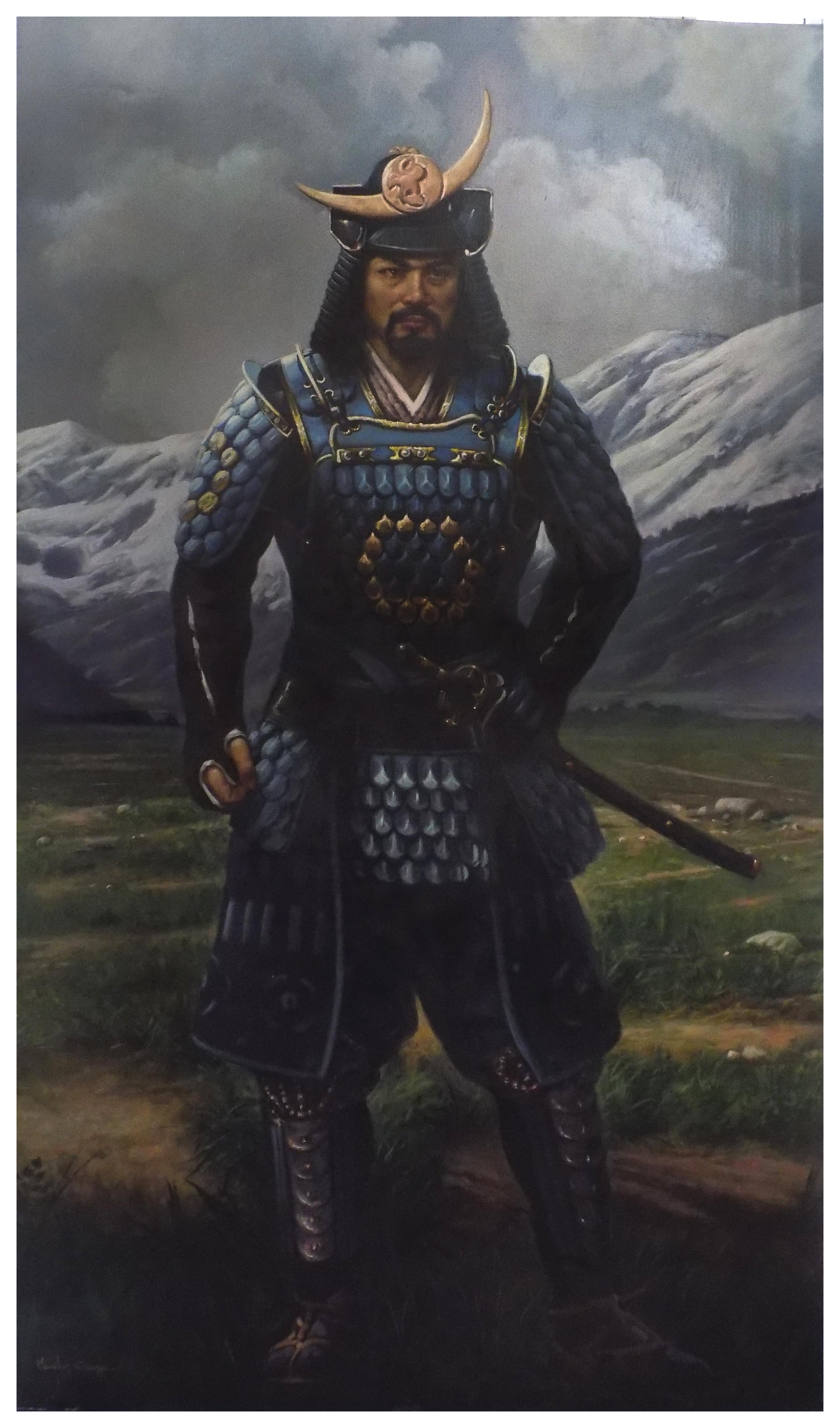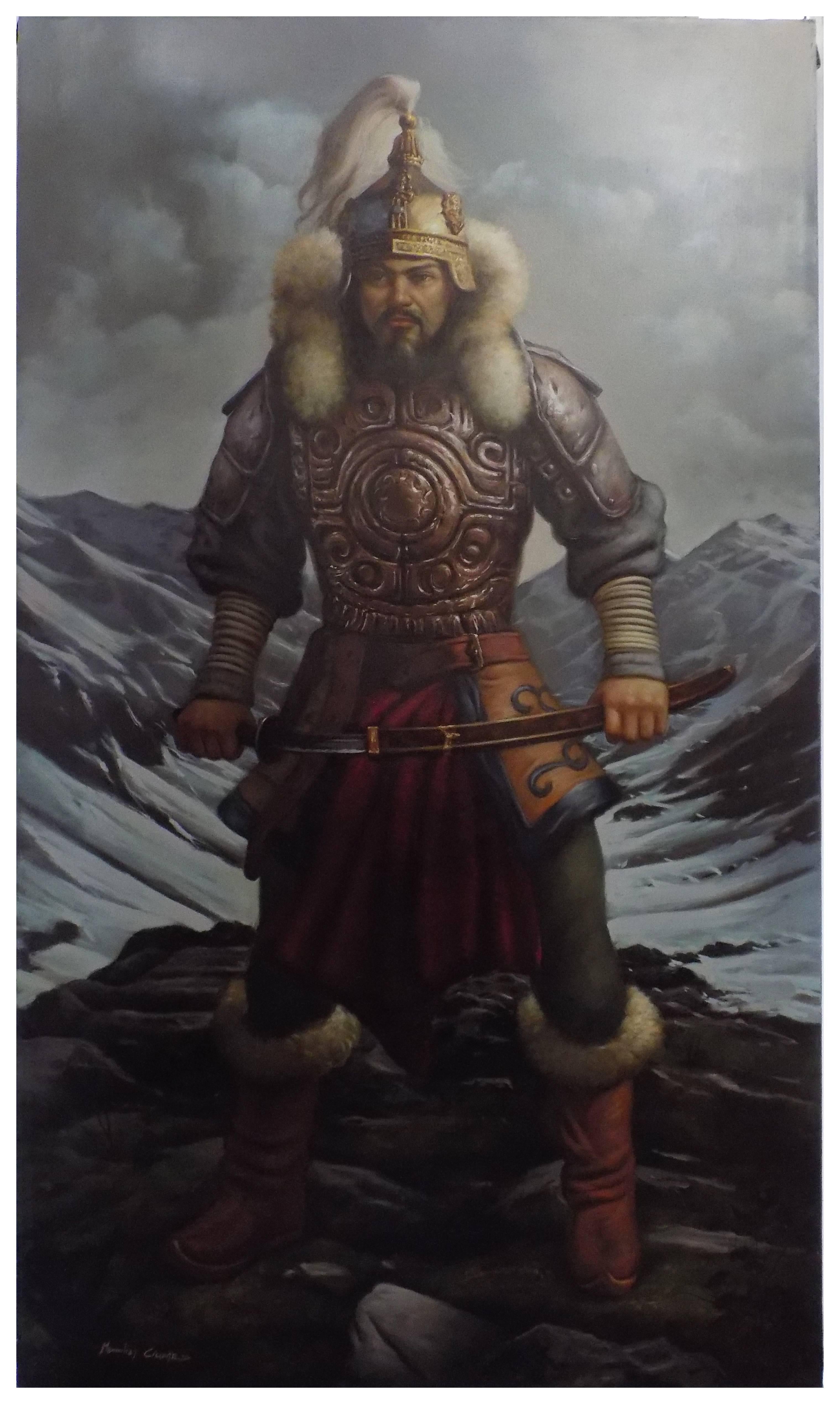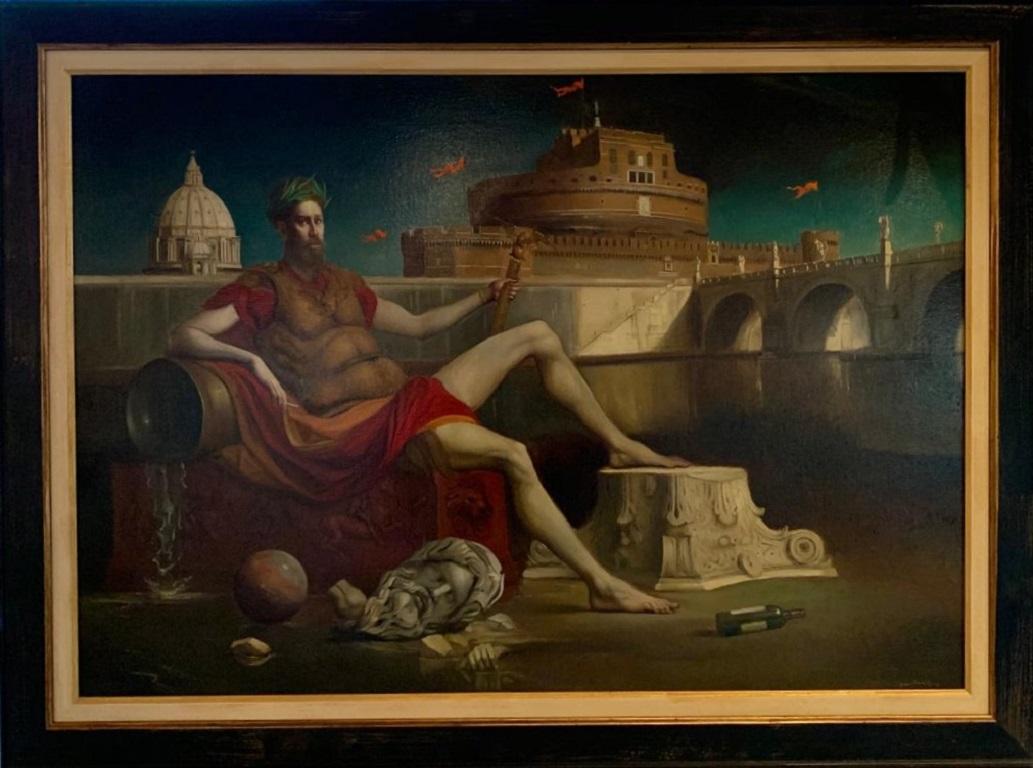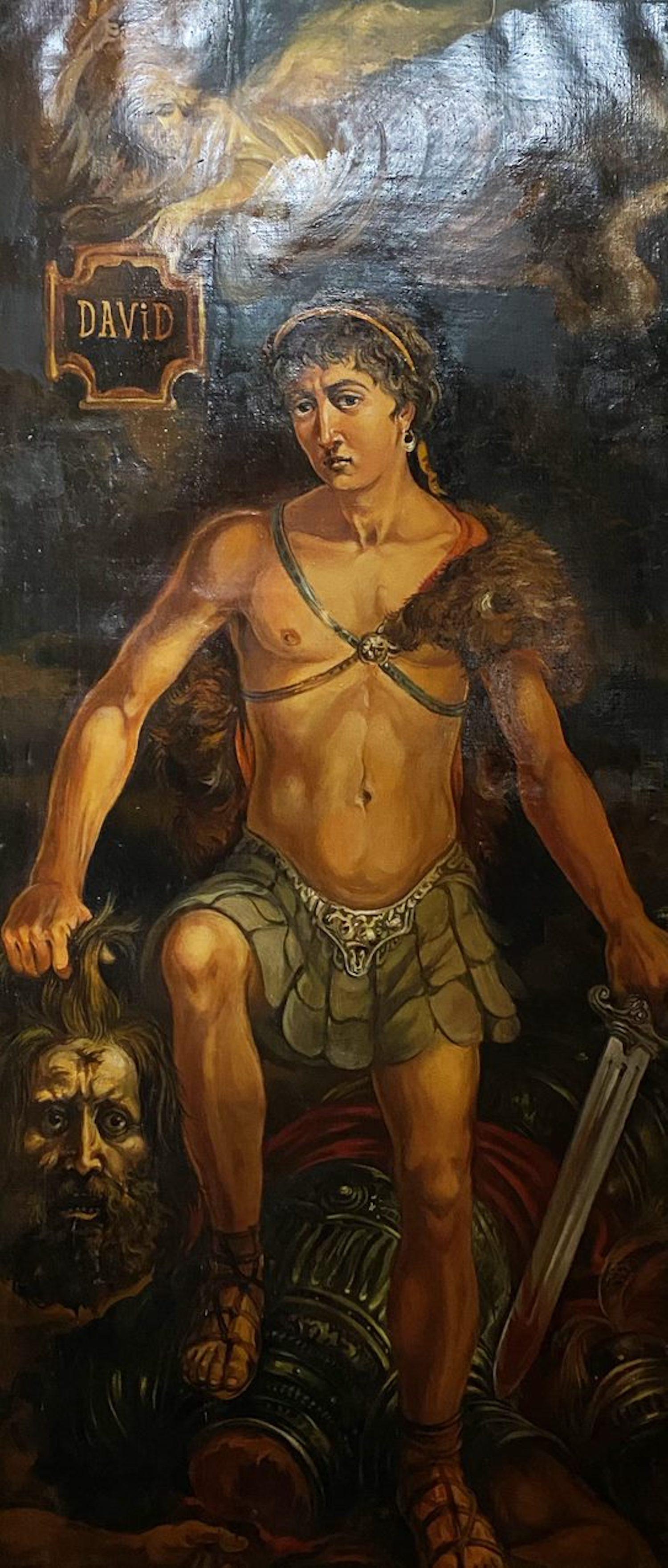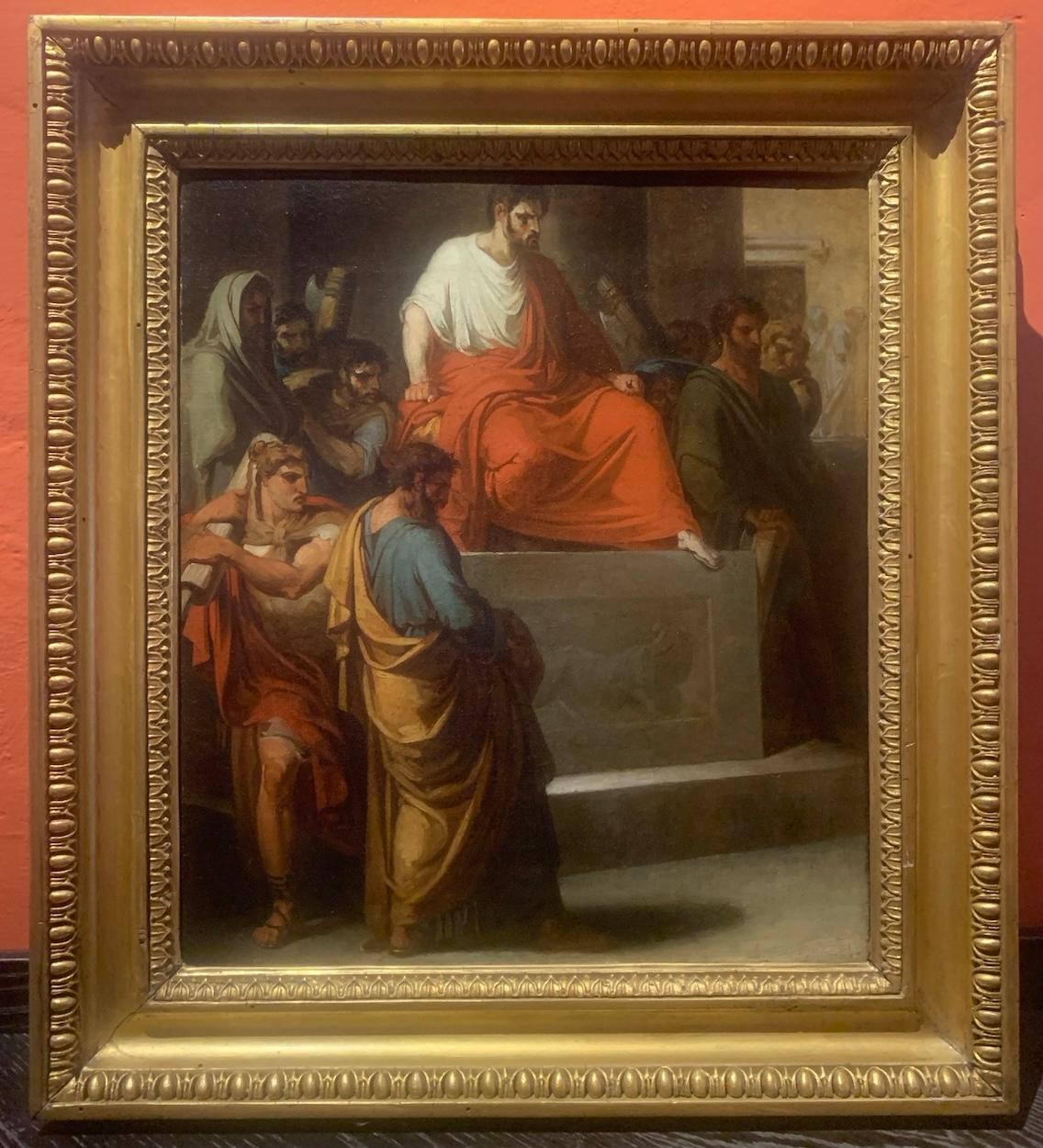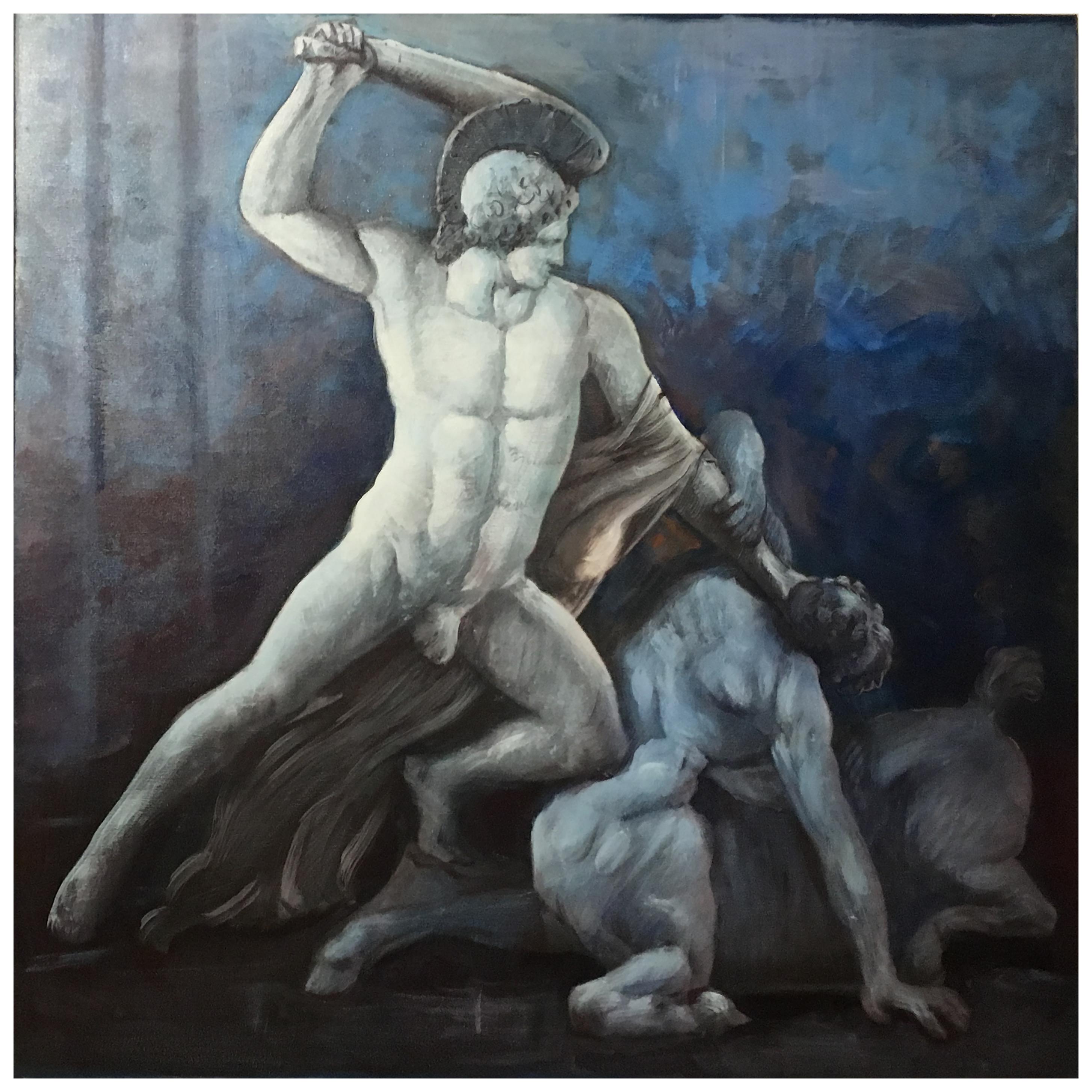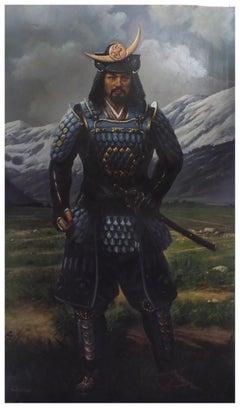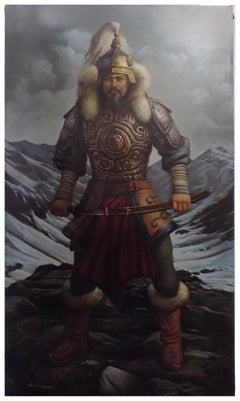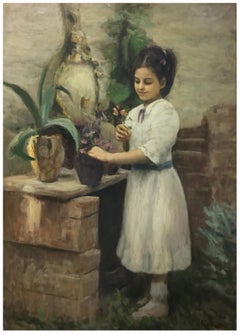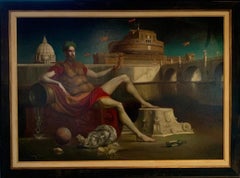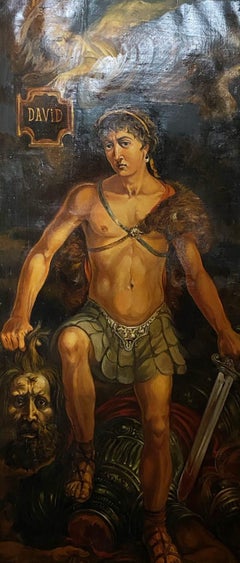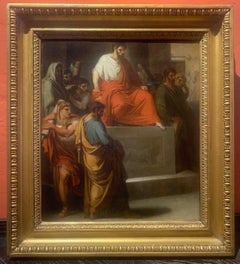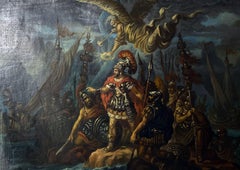Items Similar to COMMODO - Italian School - Italia - Figurative - Oil on canvas painting
Want more images or videos?
Request additional images or videos from the seller
1 of 2
Maximilian CicconeCOMMODO - Italian School - Italia - Figurative - Oil on canvas painting
$4,181.29
£3,049.19
€3,500
CA$5,719.92
A$6,400.76
CHF 3,342.17
MX$78,690.63
NOK 42,165.38
SEK 39,677.41
DKK 26,634.94
Shipping
Retrieving quote...The 1stDibs Promise:
Authenticity Guarantee,
Money-Back Guarantee,
24-Hour Cancellation
About the Item
Commodo - Maximilian Ciccone - Italia - Oil on canvas, portrait of Roman Emperor Commodo.Mis. cm. 210x120-
- Creator:Maximilian Ciccone (1972, Italian)
- Dimensions:Height: 82.68 in (210 cm)Width: 47.25 in (120 cm)
- Medium:
- Movement & Style:
- Period:
- Condition:
- Gallery Location:Napoli, IT
- Reference Number:1stDibs: LU568310329942
About the Seller
4.8
Gold Seller
Premium sellers maintaining a 4.3+ rating and 24-hour response times
1stDibs seller since 2017
172 sales on 1stDibs
Typical response time: 6 hours
- ShippingRetrieving quote...Shipping from: Napoli, Italy
- Return Policy
Authenticity Guarantee
In the unlikely event there’s an issue with an item’s authenticity, contact us within 1 year for a full refund. DetailsMoney-Back Guarantee
If your item is not as described, is damaged in transit, or does not arrive, contact us within 7 days for a full refund. Details24-Hour Cancellation
You have a 24-hour grace period in which to reconsider your purchase, with no questions asked.Vetted Professional Sellers
Our world-class sellers must adhere to strict standards for service and quality, maintaining the integrity of our listings.Price-Match Guarantee
If you find that a seller listed the same item for a lower price elsewhere, we’ll match it.Trusted Global Delivery
Our best-in-class carrier network provides specialized shipping options worldwide, including custom delivery.More From This Seller
View AllSAMURAI -Italian School - Oil on Canvas Italian Figurative Painting
By Maximilian Ciccone
Located in Napoli, IT
Samurai - Maximilian Ciccone - Italia - Oil on canvas cm.210x120-
In this majestic oil on canvas painting the Artist Ciccone portrays a samurai, exhibiting the Japanese warrior cast...
Category
2010s Old Masters Portrait Paintings
Materials
Canvas, Oil
GENGHIS KHAN - Italian School - Oil on Canvas Italian Figurative Painting
By Maximilian Ciccone
Located in Napoli, IT
GENGIS KAN - Maximilian Ciccone - Italia - Oil on canvas cm.210x120.
In this majestic oil on canvas painting the Artist Ciccone portray the Mongol leader and ruler Genghis Khan...
Category
2010s Old Masters Portrait Paintings
Materials
Canvas, Oil
MYTHOLOGICAL SCENE- Italian School - Oil on canvas Painting.
By Alfonso Pragliola
Located in Napoli, IT
MYTHOLOGICAL SCENE Italian oil on canvas painting cm.100x100, Alfonso Pragliola Italia 2010
In this oil on canvas, the painter makes his own personal and modern interpretation of Ant...
Category
2010s Modern Figurative Paintings
Materials
Canvas, Oil
CHILD -Italian School - Figurative - Italy Oil on canvas Painting
Located in Napoli, IT
CHILD - Oil on canvas cm.70x50, Tonino Manna, Italy 2002
Frame available on request from our workshop.
in this wonderful painting we admire a girl in a white dress who takes care of ...
Category
Early 2000s Old Masters Figurative Paintings
Materials
Canvas, Oil
YOUTH AND WISDOM Ciro De Rosa Italian School - Italy Figurative Oil on painting
By Ciro De Rosa
Located in Napoli, IT
Youth and wisdom -Ciro De Rosa Italia 2007 - Oil on canvas cm.60x50
Gold leaf gilded wooden frame cm.82x73 available on request
The painting by Ciro De Rosa is characterized by light...
Category
Early 2000s Old Masters Portrait Paintings
Materials
Canvas, Oil
PHILOSOPHER - Neapolitan School - Italian- Figurative Oil on canvas painting
By Ciro De Rosa
Located in Napoli, IT
Philosopher - Ciro De Rosa Italia 2008 - Oil on canvas cm. 60x50
Gold leaf gilded wooden frame available on request
The painting by the painter Ciro De Rosa portrays an old and wise ...
Category
Early 2000s Baroque Portrait Paintings
Materials
Canvas, Oil
You May Also Like
Divus Teberinus Selportrait City Rome Contemporary Oil Paint In Stock
By Giovanni Tommasi Ferroni
Located in Utrecht, NL
Divus Teberinus Selportrait City Rome Contemporary Oil Paint In Stock
Giovanni Tommasi Ferroni (1967, Rome) descended from an artistic Tuscan family. His grandfather, father, sister ...
Category
21st Century and Contemporary Contemporary Portrait Paintings
Materials
Oil
David, Classic Art, Original oil Painting, Ready to Hang
Located in Granada Hills, CA
Artist: Alexander Litvinov
Work: Original oil painting, handmade artwork, one of a kind
Medium: Oil on Canvas
Style: Classic Figurative
Year: 1994
Title: David
Size: 31" x 14" x 0.8...
Category
2010s Impressionist Figurative Paintings
Materials
Canvas, Oil
Dipinto neoclassico figurativo storico italiano del XIX secolo
By Vincenzo Camuccini
Located in Florence, IT
Il dipinto è uno studio piuttosto elaborato e finito della figura del decemviro Appio Claudio, e del suo entourage con i littori, che primeggia nella parte sinistra della monumentale...
Category
Early 1800s Other Art Style Figurative Paintings
Materials
Canvas, Oil
Aeneas, Classic Art, Figurative, Original oil Painting, Ready to Hang
Located in Granada Hills, CA
Artist: Alexander Litvinov
Work: Original oil painting, handmade artwork, one of a kind
Medium: Oil on canvas
Style: Classic Figurative
Year: 1995
Title: Aeneas
Size: 12" x 17.5" x...
Category
2010s Impressionist Figurative Paintings
Materials
Canvas, Oil
Neoclassical figurative tempera on paper with historical theme.
By Luigi Ademollo
Located in Florence, IT
Measurements with frame: 87 x 69 cm
The Ademollian tempera, which can be dated roughly between the first and third decades of the 19th century, illustrates two episodes of war and mo...
Category
Early 19th Century Other Art Style Figurative Paintings
Materials
Paper, Tempera
Usurer, Portrait, Classic Art, Original oil Painting, Ready to Hang
Located in Granada Hills, CA
Artist: Alexander Litvinov
Work: Original oil painting, handmade artwork, one of a kind
Medium: Oil on Canvas
Style: Classic Figurative
Year: 2003
Title: Usurer
Size: 12" x 16" x 0....
Category
2010s Impressionist Figurative Paintings
Materials
Oil, Canvas
